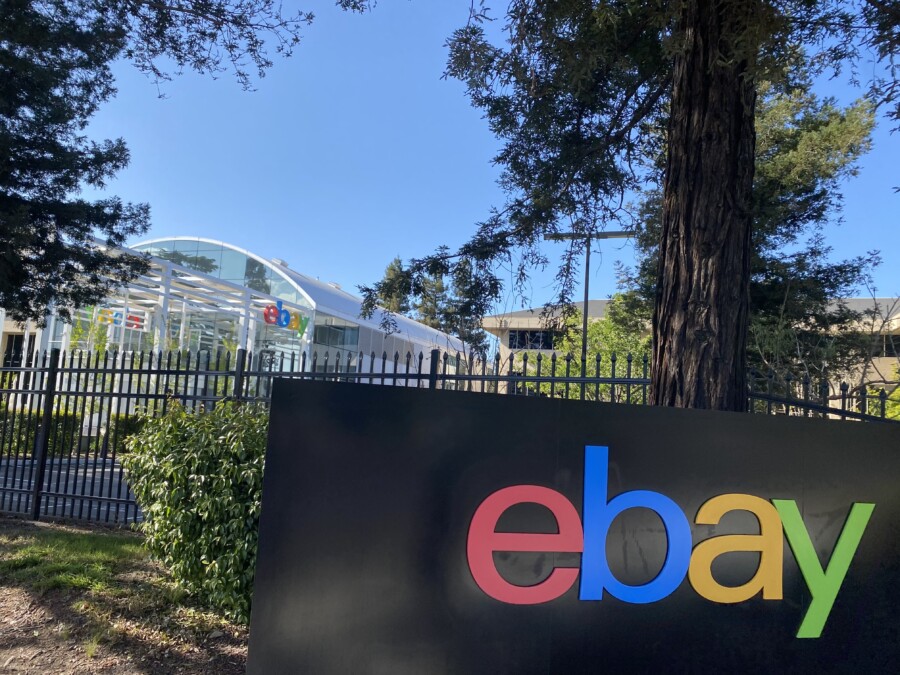A team of scientists at the University of Toulouse in France has developed an enzyme that can break down plastic waste. The enzyme, called LCCICCG, was re-engineered over eight years to become a specialist in breaking down PET plastic. PET is a polymer commonly found in plastic packaging and polyester clothing. The enzyme is so efficient that it can completely break down the PET polymer into its constituent monomers, which can then be used to make new plastic. The team has created a demonstration plant in Clermont-Ferrand, France, where they plan to scale up operations and recycle 50,000 tonnes of PET waste per year by 2025.
Carbios, the company behind the enzyme, does not aim to become a recycler itself but plans to license its process to other companies. They have formed a consortium with big brands such as Nestle, L’Oréal, and PepsiCo. The familiarity of the enzyme’s product is both an advantage and a challenge. While it produces the same chemical monomers used by plastic producers, it will cost about 60% more than those derived from petrochemicals. However, Carbios CEO Emmanuel Ladent believes that as the company gains access to more feedstock, the cost of raw materials will go down.
While Carbios is leading the way in PET recycling, other research teams are also working on PET recycling using different enzymes. However, none of these teams have reached the point of scaling up their processes. Professor Andy Pickford from the University of Portsmouth is optimistic about Carbios’ work and hopes that more people will buy into it if they see that it works. However, he is less optimistic about recycling other types of plastic and suggests that we should move away from using these plastics altogether.
Less than 10% of plastic worldwide is currently recycled, with the majority ending up in landfills. Carbios is already looking into developing enzymes to break down plastics with more complex chemical structures, such as nylon. The researchers hope that their work can help change the world and make it a better place by tackling the plastic waste problem.
Original news source: The T-shirt chewing enzyme ready to tackle plastic waste (BBC)
Listen
Slow
Normal
Fast
Group or Classroom Activities
Warm-up Activities:
– News Summary
Instructions: Divide the class into pairs or small groups. Give each group a few minutes to read the article. Then, ask each group to summarize the main points of the article in their own words. Afterward, have each group share their summary with the rest of the class.
– Opinion Poll
Instructions: Divide the class into pairs or small groups. Ask each group to come up with three questions related to the article. These questions can be about the development of the enzyme, the potential impact on the environment, or any other aspect they find interesting. Once the questions are ready, have each group take turns asking their questions to the rest of the class. Encourage a discussion after each question to explore different perspectives and opinions.
– Vocabulary Pictionary
Instructions: Create a list of key vocabulary words from the article, such as “enzyme,” “polymer,” “monomers,” “recycle,” etc. Divide the class into small groups and assign each group a word from the list. Give them a few minutes to come up with a simple drawing or sketch that represents the word. Afterward, have each group present their drawing to the rest of the class, without using any words. The other students must guess the word based on the drawing.
– Speed Summarizing
Instructions: Divide the class into pairs or small groups. Assign each group a specific section of the article to summarize. Give them a few minutes to read and discuss the section. Then, challenge them to summarize the section in one minute or less. Afterward, have each group take turns presenting their speedy summaries to the rest of the class.
– Headline Creation
Instructions: Write the following headline on the board: “Scientists Develop Enzyme to Break Down Plastic Waste.” In pairs or small groups, ask the students to brainstorm alternative headlines for the article. Encourage them to be creative and think of catchy or attention-grabbing titles. Afterward, have each group share their headline ideas and discuss why they chose them.
Comprehension Questions:
1. What is the name of the enzyme developed by the scientists at the University of Toulouse?
2. What type of plastic does the enzyme specialize in breaking down?
3. What can the PET polymer be used to make after it is broken down by the enzyme?
4. What is the goal of Carbios in regards to their recycling process?
5. Why will the enzyme’s product cost more than those derived from petrochemicals?
6. What other companies have formed a consortium with Carbios?
7. What is the current rate of plastic recycling worldwide?
8. What type of plastic are the researchers at Carbios looking to develop enzymes for next?
Go to answers ⇩
Listen and Fill in the Gaps:
A team of scientists at the University of (1)______ in France has developed an enzyme that can break down (2)______ (3)______. The enzyme, called (4)______, was re-engineered over eight years to become a specialist in breaking down PET plastic. PET is a polymer commonly found in plastic packaging and polyester clothing. The enzyme is so efficient that it can completely break down the PET polymer into its constituent monomers, which can then be used to make new plastic. The team has created a demonstration plant in Clermont-Ferrand, France, where they plan to scale up operations and recycle 50,000 tonnes of PET waste per year by 2025.
Carbios, the company behind the (5)______, does not aim to become a recycler itself but plans to license its process to other companies. They have formed a consortium with big brands such as Nestle, (6)______, and PepsiCo. The familiarity of the enzyme’s product is both an advantage and a challenge. While it (7)______ the same chemical monomers used by plastic (8)______, it will cost about 60% more than those derived from petrochemicals. However, (9)______ CEO Emmanuel Ladent believes that as the company gains access to more feedstock, the cost of raw materials will go down.
While Carbios is leading the way in PET recycling, other (10)______ teams are also working on PET recycling using different enzymes. However, none of these teams have reached the point of scaling up their processes. (11)______ Andy (12)______ from the University of Portsmouth is optimistic about Carbios’ work and hopes that more people will buy into it if they see that it works. However, he is less optimistic about recycling other types of plastic and suggests that we should move away from using these plastics altogether.
Less than 10% of plastic (13)______wide is currently recycled, with the majority ending up in landfills. Carbios is already looking into developing enzymes to break down plastics with more complex chemical (14)______, such as (15)______. The researchers hope that their work can help change the world and make it a better (16)______ by tackling the plastic waste problem.
Go to answers ⇩
Discussion Questions:
Students can ask a partner these questions, or discuss them as a group.
1. What is an enzyme and how does it work?
2. How would you feel if plastic waste could be completely broken down and recycled into new plastic?
3. Do you think it is important for companies to find solutions to the plastic waste problem? Why or why not?
4. What are some advantages and challenges of using enzymes to break down plastic waste?
5. How do you think the cost of raw materials for recycled plastic will change in the future?
6. Do you think it is realistic to expect a significant increase in plastic recycling in the near future? Why or why not?
7. What are some potential benefits of using enzymes to recycle plastics with more complex chemical structures?
8. Do you think it is possible to completely eliminate the use of certain types of plastic? Why or why not?
9. How do you think the development of enzymes to break down plastic waste will impact the environment?
10. What are some potential drawbacks or limitations of using enzymes for plastic recycling?
11. How do you think the plastic waste problem can be effectively addressed on a global scale?
12. Do you think the responsibility for plastic waste management should lie with individuals, companies, or governments? Why or why not?
13. How do you think the development of enzymes for plastic recycling will impact the economy?
14. What are some potential long-term effects of plastic waste on the environment and human health?
15. Do you think it is possible to achieve a world without plastic waste? Why or why not?
Individual Activities
Vocabulary Meanings:
Match each word to its meaning.
Words:
1. enzyme
2. plastic
3. PET
4. recycling
5. monomers
6. waste
7. polymer
8. packaging
Meanings:
(a) A substance produced by living organisms that acts as a catalyst
(b) A synthetic material made from polymers
(c) The material used to contain and protect products
(d) A large molecule made up of repeating subunits
(e) The building blocks of a polymer
(f) A type of plastic commonly used in packaging and clothing
(g) The process of converting waste materials into reusable materials
(h) Material that is discarded or no longer useful
Go to answers ⇩
Multiple Choice Questions:
1. What is the name of the enzyme developed by the scientists at the University of Toulouse?
(a) PET
(b) Clermont-Ferrand
(c) LCCICCG
(d) Carbios
2. What type of plastic can the enzyme break down?
(a) Nylon
(b) PET
(c) Polyester
(d) Packaging
3. What is the purpose of the demonstration plant in Clermont-Ferrand?
(a) To scale up operations and recycle PET waste
(b) To develop new enzymes
(c) To produce new plastic
(d) To become a recycler
4. Who does Carbios plan to license its process to?
(a) Nestle
(b) L’Oréal
(c) Other companies
(d) PepsiCo
5. What is the advantage and challenge of the enzyme’s product?
(a) It can break down PET plastic, but not other types of plastic
(b) It can recycle 50,000 tonnes of PET waste per year, but it is not efficient
(c) It can be used to make new plastic, but it cannot break down the PET polymer
(d) It produces the same chemical monomers used by plastic producers, but it will cost more than those derived from petrochemicals
6. How much plastic worldwide is currently recycled?
(a) More than 50%
(b) Less than 10%
(c) Exactly 50%
(d) None of the above
7. What other types of plastic are the researchers at Carbios looking into?
(a) Plastics with simpler chemical structures, such as PET
(b) Plastics with the same chemical structure as PET
(c) Plastics that cannot be recycled
(d) Plastics with more complex chemical structures, such as nylon
8. What does Professor Andy Pickford suggest about recycling other types of plastic?
(a) We should move away from using these plastics altogether
(b) We should continue to recycle other types of plastic
(c) We should focus on developing enzymes to break down other types of plastic
(d) We should invest more in landfills for other types of plastic
Go to answers ⇩
True or False Questions:
1. More than 10% of plastic worldwide is currently recycled, with the majority ending up in landfills.
2. The enzyme can completely break down the PET polymer into its constituent monomers.
3. PET is an uncommon polymer found in plastic packaging and polyester clothing.
4. The enzyme, called LCCICCG, was re-engineered over eight years to specialize in breaking down PET plastic.
5. Carbios, the company behind the enzyme, does not plan to license its process to other companies and instead wants to become a recycler itself.
6. The team has created a demonstration plant in Clermont-Ferrand, France, to scale up operations and recycle 50,000 tonnes of PET waste per year by 2025.
7. Scientists at the University of Toulouse have not developed an enzyme that can break down plastic waste.
8. Carbios has formed a consortium with big brands such as Nestle, L’Oréal, and PepsiCo.
Go to answers ⇩
Write a Summary:
Write a summary of this news article in two sentences.
Writing Questions:
Answer the following questions. Write as much as you can for each answer.
1. What is the enzyme developed by scientists at the University of Toulouse capable of breaking down?
2. How efficient is the enzyme at breaking down PET plastic?
3. What are Carbios’ plans for their recycling process?
4. What is the advantage and challenge of the enzyme’s product?
5. What is the current state of plastic recycling worldwide?
Answers
Comprehension Question Answers:
1. The enzyme developed by the scientists at the University of Toulouse is called LCCICCG.
2. The enzyme specializes in breaking down PET plastic.
3. The PET polymer can be used to make new plastic after it is broken down by the enzyme.
4. The goal of Carbios is to license its recycling process to other companies.
5. The enzyme’s product will cost more than those derived from petrochemicals because of the re-engineering process and the cost of raw materials.
6. The companies that have formed a consortium with Carbios are Nestle, L’Oréal, and PepsiCo.
7. Less than 10% of plastic worldwide is currently recycled.
8. The researchers at Carbios are looking to develop enzymes for breaking down plastics with more complex chemical structures, such as nylon.
Go back to questions ⇧
Listen and Fill in the Gaps Answers:
(1) Toulouse
(2) plastic
(3) waste
(4) LCCICCG
(5) enzyme
(6) L’Oréal
(7) produces
(8) producers
(9) Carbios
(10) research
(11) Professor
(12) Pickford
(13) world
(14) structures
(15) nylon
(16) place
Go back to questions ⇧
Vocabulary Meanings Answers:
1. enzyme
Answer: (a) A substance produced by living organisms that acts as a catalyst
2. plastic
Answer: (b) A synthetic material made from polymers
3. PET
Answer: (f) A type of plastic commonly used in packaging and clothing
4. recycling
Answer: (g) The process of converting waste materials into reusable materials
5. monomers
Answer: (e) The building blocks of a polymer
6. waste
Answer: (h) Material that is discarded or no longer useful
7. polymer
Answer: (d) A large molecule made up of repeating subunits
8. packaging
Answer: (c) The material used to contain and protect products
Go back to questions ⇧
Multiple Choice Answers:
1. What is the name of the enzyme developed by the scientists at the University of Toulouse?
Answer: (c) LCCICCG
2. What type of plastic can the enzyme break down?
Answer: (b) PET
3. What is the purpose of the demonstration plant in Clermont-Ferrand?
Answer: (a) To scale up operations and recycle PET waste
4. Who does Carbios plan to license its process to?
Answer: (c) Other companies
5. What is the advantage and challenge of the enzyme’s product?
Answer: (d) It produces the same chemical monomers used by plastic producers, but it will cost more than those derived from petrochemicals
6. How much plastic worldwide is currently recycled?
Answer: (b) Less than 10%
7. What other types of plastic are the researchers at Carbios looking into?
Answer: (d) Plastics with more complex chemical structures, such as nylon
8. What does Professor Andy Pickford suggest about recycling other types of plastic?
Answer: (a) We should move away from using these plastics altogether
Go back to questions ⇧
True or False Answers:
1. More than 10% of plastic worldwide is currently recycled, with the majority ending up in landfills. (Answer: False)
2. The enzyme can completely break down the PET polymer into its constituent monomers. (Answer: True)
3. PET is an uncommon polymer found in plastic packaging and polyester clothing. (Answer: False)
4. The enzyme, called LCCICCG, was re-engineered over eight years to specialize in breaking down PET plastic. (Answer: True)
5. Carbios, the company behind the enzyme, does not plan to license its process to other companies and instead wants to become a recycler itself. (Answer: False)
6. The team has created a demonstration plant in Clermont-Ferrand, France, to scale up operations and recycle 50,000 tonnes of PET waste per year by 2025. (Answer: True)
7. Scientists at the University of Toulouse have not developed an enzyme that can break down plastic waste. (Answer: False)
8. Carbios has formed a consortium with big brands such as Nestle, L’Oréal, and PepsiCo. (Answer: True)
Go back to questions ⇧












